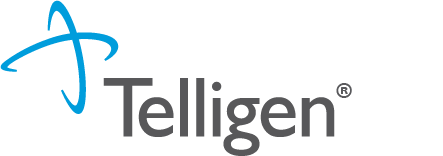Accessability
Section 508 – EIT Accessibility
Telligen is committed to making its Web site and electronic information technology accessible to the widest possible audience, including individuals with disabilities. In keeping with its mission, the Telligen Web site complies by implementing the regulations of Section 508 of the Rehabilitation Act.
Synopsis of Section 508 Accessibility Requirements
Section 508 of the Rehabilitation Act of 1973, as amended by the Workforce Investment Act of 1998, requires that when federal agencies procure, develop, maintain, or use EIT, they ensure that federal employees and members of the public with disabilities have access to and use of information and data that is comparable to the access to and use of information and data that is available to individuals without disabilities.
The first regulation implementing Section 508 was issued by the Architectural and Transportation Barriers Compliance Board (the “Access Board”), an independent federal agency, whose primary mission is to promote accessibility for individuals with disabilities. This regulation is referred to as the Access Board’s “EIT Accessibility Standards,” which became enforceable on June 21, 2001. The Access Board’s standards set forth a definition of EIT and the technical and functional provisions and performance criteria necessary for compliance with Section 508.
In January 2005, the Secretary of HHS signed the “HHS Policy for Section 508 Electronic and Information Technology (EIT).” This policy establishes guidance for implementing Section 508 throughout the Department.
Although federal agencies have an explicit statutory obligation to make all EIT that they develop, procure, maintain, or use compliant with Section 508, individuals may only file complaints or lawsuits to enforce Section 508’s requirements with respect to EIT systems procured or deployed on or after June 21, 2001. The Section 508 requirements do not apply retroactively to pre-existing EIT. However, as agencies upgrade and change their EIT, they must comply with the standards. Specifically, the Electronic and Information Technology Accessibility Standards: Economic Assessment states that:
“The standards are to be applied prospectively and do not require federal agencies to retrofit existing electronic and information technology. As agencies upgrade and change their electronic and information technology, they must comply with the standards.”
It should be noted, however, that federal agencies have additional responsibilities under Section 501 and Section 504 of the Rehabilitation Act. These Sections require that agencies provide reasonable accommodation to employees with disabilities and provide program access to members of the public with disabilities and take other actions necessary to prevent discrimination on the basis of disability in their programs.
For Alternate Access to Web Information
At this time, all Telligen Web information should be accessible via screen readers and other accessibility tools, with the exception of some pre-2001 information that may not be available in accessible formats.
If you need an alternative means of access to any information on an Telligen Web site, please Contact Us. Let us know the nature of your accessibility problem, the Web address of the requested information, and your contact information.
Adobe PDF
Many of our documents are available in PDF format. Version 6.0 of Adobe Reader, formerly called Acrobat Reader, now includes a built in Read Out Loud option. If your current version of Adobe Reader doesn’t have this feature, the updated plug-in is available at no charge from Adobe.
Reader 6.0 synthesizes the text in Adobe PDF files into speech, using a regular PC or Macintosh computer, so anyone can read basic Adobe PDF text files aloud, even without a screen reader. For more information about this new feature please read Adobe Acrobat 6.0 and Accessibility.
The Read Out Loud Option can be accessed by using the following key board short cuts:
View single page – Shift + Ctrl + V
Read entire document – Shift + Ctrl + B
To install the latest version of the Adobe Reader go to: www.adobe.com/reader.
If you use screen reader software (for example an audio-enabled web browser) which is not compatible with Adobe Reader, Adobe provides a free online tool which converts the content of PDF files to a format which can be understood by most screen reader applications. If you need assistance to convert PDF documents, Adobe® offers conversion tools at its Accessibility Resource Center at https://www.adobe.com/accessibility.html.
